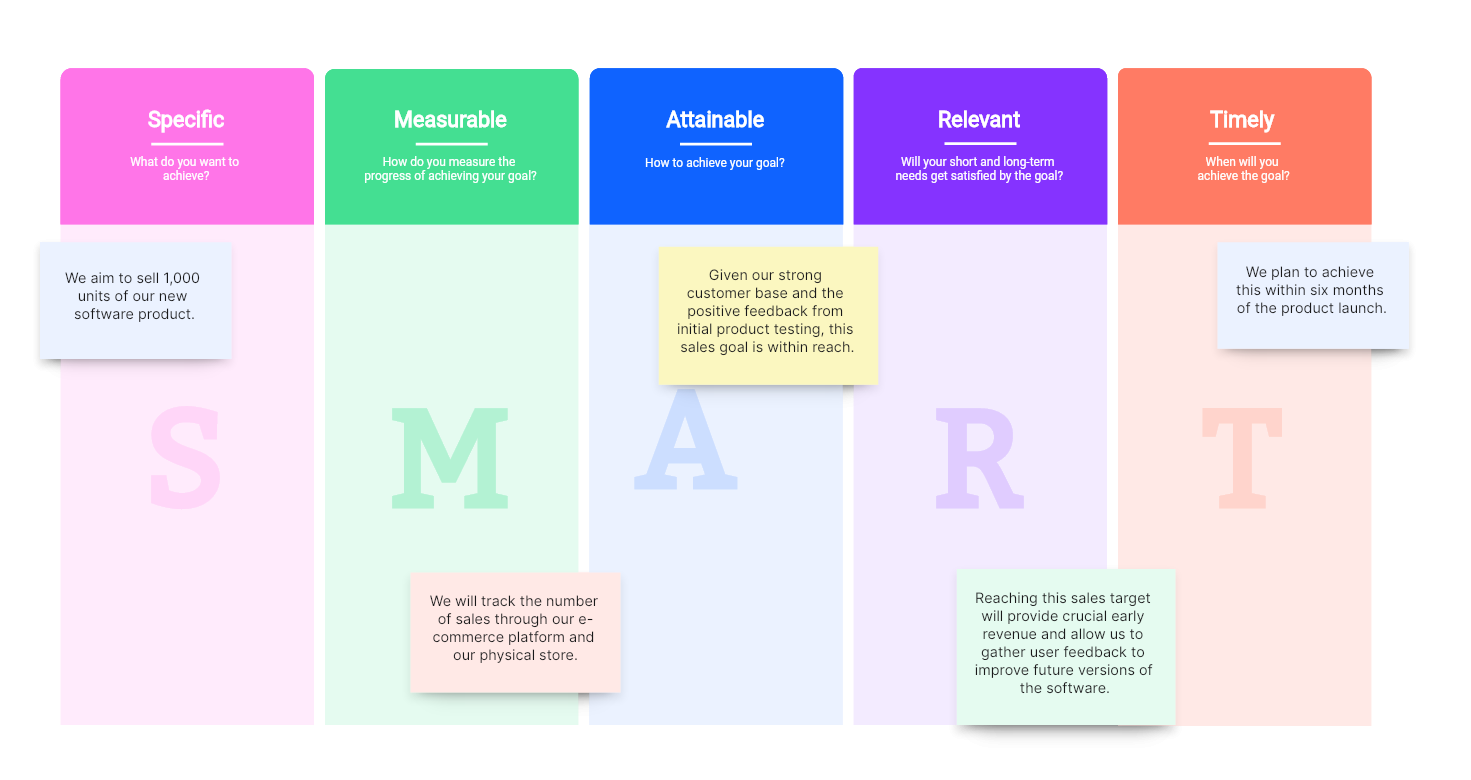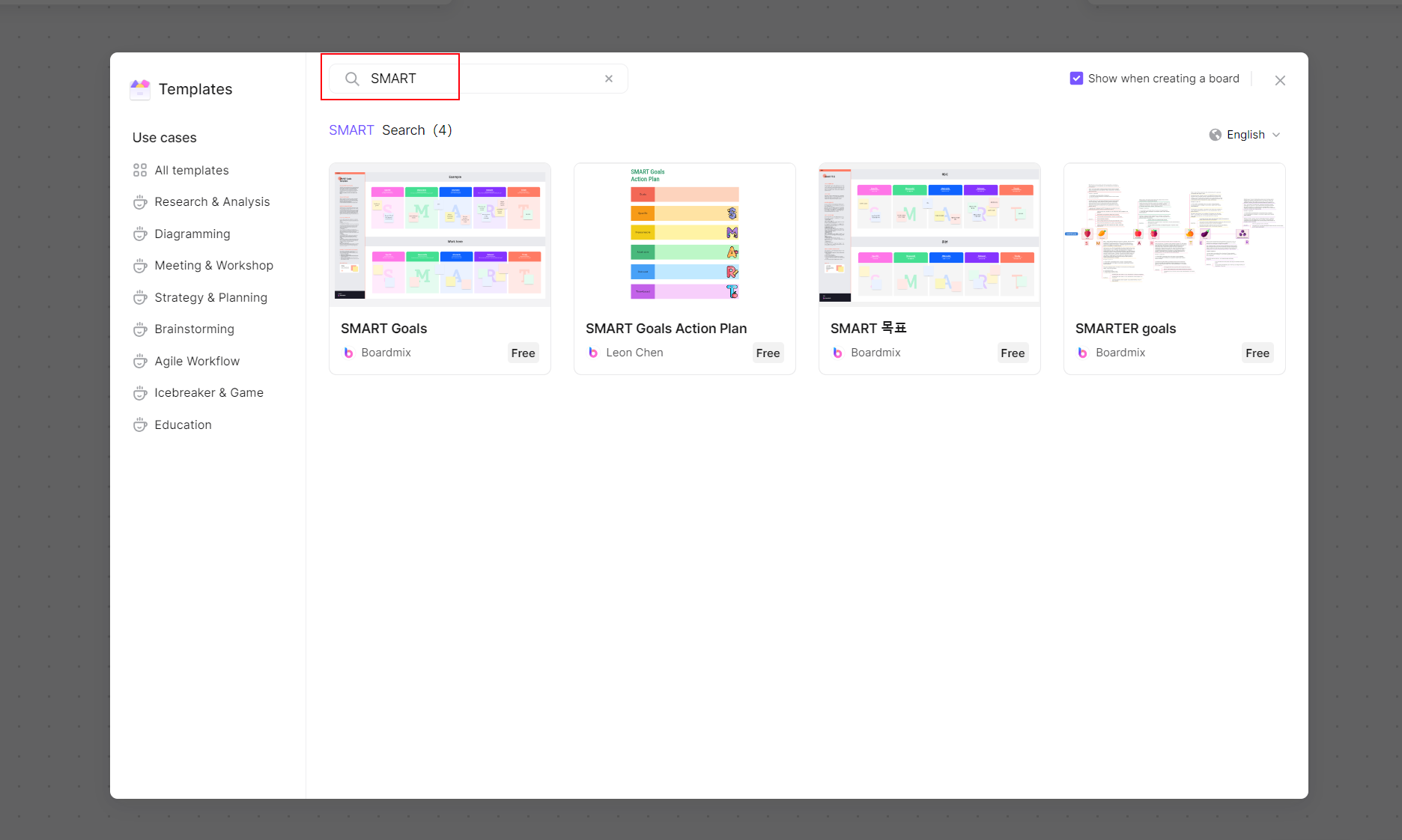In a dynamic world that revolves around an incessant loop of targets and achievements, understanding how to set up pragmatic and tangible objectives has become more important than ever. With diverse ambitions knocking on every door, we find ourselves entangled in a maze of desires and goals. To pave the path towards fulfilling these aspirations, it is critical to be clear, focused, and intentional.
In this post, you’ll enter the world of Objective SMART Goals—a roadmap to success that has proven its efficacy time and again in various professional and personal scenarios. Let’s get started!
What Are Objective SMART Goals
Objective SMART Goals, as the name suggests, are goals that follow the SMART framework—Specific, Measurable, Achievable, Relevant, and Time-Bound.

- Specific: Objective SMART Goals are not vague or broad; they are precise, well-defined, and clarify what exactly needs to be accomplished.
- Measurable: These goals quantify progress and results, making it easy to track whether the goal has been achieved or not.
- Achievable: Despite being ambitious, Objective SMART Goals are realistic. They consider the resources at disposal and align with individual capacity or an organization's capabilities.
- Relevant: These goals relate to broader objectives and resonate with current needs or long-term ambitions.
- Time-bound: Objective SMART Goals have a clear timeline associated with them to create urgency and encourage timely completion.
When to Set Objective SMART Goals
The adoption of Objective SMART Goals can mark a monumental shift in how one approaches their ambitions. Whether you are an individual looking to achieve personal milestones or an organization with set targets, these goal-setting guidelines are immensely adaptable. But when should one implement these principles? Understanding the optimal timing to use this methodology is equally as important as the methodology itself.
Personal Development Planning
In our personal lives, setting SMART goals can help drive growth and improvement in diverse areas. These could be goals associated with health, finance, skills acquisition, or other facets of personal life. For example, someone aiming to lose weight can set an objective SMART goal like "I want to lose 20 pounds in the next 6 months by going to the gym 3 days per week and cutting out sugar from my diet".
Career Progression
When mapping out a career path or seeking a promotion, it's imperative to set objective SMART Goals. It enables you to have a clear path forward, thereby increasing your chances of achieving career aspirations. For instance, "I will gain the skills and experience necessary to become a team leader within my organization in the next 2 years by taking on additional projects and enrolling in leadership training".
Project Management
In any project scenario, teams need a clear objective and direction to ensure everyone's efforts are aligned. Setting SMART goals provides a tangible pathway and timeline, helping each member understand what's required to reach the project's successful completion.
Organizational Strategy
On an organizational level, SMART Goals serve as a strategic compass guiding the way forward. They assist in areas like customer satisfaction, sales, employee engagement, market penetration, and more. An example of such a goal could be "We aim to increase our customer base by 25% over the next fiscal year by launching an aggressive social media marketing campaign."
During Performance Reviews
SMART Goals are extremely useful during performance reviews or appraisals in any organization. They allow both managers and employees to have clear expectations and an accurate measure of job performance.
Educational Ambitions
Students can employ Objective SMART Goals to improve academic performance or when applying for higher education. This process can provide students with a clear idea of what they need to do to accomplish their academic goals.
In conclusion, Objective SMART Goals should be used whenever there is a vision that needs translation into concrete steps. These goals give direction and purpose to actions, thereby leading to better focus and higher productivity.
Benefits of Setting Objective SMART Goals
Objective SMART Goals serve as an effective tool for guiding efforts towards achievement. Here's why:
- Clarity: They clearly define what is expected, leaving no room for ambiguity or confusion.
- Motivation: Having measurable and achievable goals can significantly boost motivation levels, pushing one to perform better.
- Time Management: By setting a deadline, SMART Goals encourage efficient use of time and resources.
- Improved Decision-Making: With clearly defined goals, decision-making becomes more streamlined and targeted.
Objective SMART Goals are not merely about setting targets; they are about carving a meticulous pathway that leads to the desired destination in a timely and organized manner. Embrace the power of Objective SMART Goals today and observe how they bring forth a profound difference in every endeavor you undertake.
A Specific Example of Objective SMART Goals
The SMART goals framework serves as a useful tool that can be implemented across multiple fields. By providing a clear and succinct roadmap to success, these goals create the motivation to move forward. To elucidate this further, let's consider a specific example in the realm of marketing.
Objective SMART Goals in Marketing
Let's assume the company ABC Tech is launching a new software product. They have decided to set a sales goal following the SMART framework. Here's how it could look:
Completed Objective SMART Goal: "Within six months of the product launch, we aim to sell 1,000 units of our new software product, tracked through our e-commerce platform and our physical store. Achieving this goal aligns with our broader objectives of gathering user feedback and securing early revenue."
- Specific: "We aim to sell 1,000 units of our new software product."
- Measurable: "We will track the number of sales through our e-commerce platform and our physical store."
- Achievable: "Given our strong customer base and the positive feedback from initial product testing, this sales goal is within reach."
- Relevant: "Reaching this sales target will provide crucial early revenue and allow us to gather user feedback to improve future versions of the software."
- Time-bound: "We plan to achieve this within six months of the product launch."

This example clarifies how an Objective SMART Goal effectively translates a broad ambition into a specific, actionable target. It sets a clear path forward for everyone involved and provides a way to track progress towards achieving the target. Moreover, this example illustrates how this robust goal-setting framework can easily apply to various situations - whether personal or professional.
How to Set Objective SMART Goals (Template & Tool Included)
Setting SMART goals is a strategic method of clearly defining and planning objectives that are Specific, Measurable, Achievable, Relevant, and Time-bound. Let's delve into the process of setting these objectives and the use of Boardmix, a comprehensive tool that helps streamline this process with templates from the Boardmix template center.

Best Practices of Setting Objective SMART Goals
Step 1: Define Specific Goals
The first step involves detailing exactly what you want to accomplish. Avoid generic statements like "increase sales" or "improve customer satisfaction". Instead, narrow down the goal to something more explicit. For example, "increase online sales by 20%" or "achieve 90% customer satisfaction rating".
Step 2: Establish Measurable Outcomes
Next, identify metrics that will help you track the progress towards your goal. Make sure your goals are quantifiable; for instance, the number of units sold, percentage increase in website traffic, or revenue generated.
Step 3: Ensure Your Goals Are Achievable
Your goal must be realistic and achievable. Consider the resources available, potential challenges, and whether it aligns with your broader strategic objectives.
Step 4: Align Goals with Relevant Objectives
Each SMART goal should have relevance to your wider business or personal goals. Confirm that your goal aligns with broader organizational strategies or personal development plans.
Step 5: Set a Time-Bound Target
Finally, each goal should have a clear deadline. This helps create urgency and focus.
Utilizing Boardmix for Setting Objective SMART Goals
Now that we have covered the principles of setting Objective SMART Goals, let's see how to use Boardmix to facilitate this process.
Boardmix is a tool that offers various project management and team collaboration features. Its templates help outline specific goals and track progress effectively. Here is how you can use it.
Choose a Template: From the Boardmix template center, select a SMART Goals template that suits your needs. These templates are designed to help break down each element of SMART goals effectively.

Customize Your Template: Once you have chosen a template, customize it according to your specific objective. Add details about what exactly you want to accomplish, how you will measure progress, whether it is achievable, its relevance, and when it needs to be accomplished by.

Track Your Progress: With Boardmix, you can keep track of your progress towards each goal. Use its features to update the status of your goals as they progress from 'To do', 'in progress', to 'completed'.
Collaborate with Your Team: If you're working in a team setting, Boardmix's collaboration features come in handy. You can share your goals with team members, assign tasks, and track everyone's progress.

Review and Update: Use Boardmix's features to periodically review your progress towards achieving each goal and make necessary adjustments.
With these steps and the support of a tool like Boardmix, setting Objective SMART Goals becomes a simplified and efficient process. The key is to be specific, measurable, achievable, relevant, and time-bound in your goal setting, and to consistently review and adjust your plans as needed.
Tips and Tricks on Setting Objective SMART Goals
Setting SMART goals – those that are Specific, Measurable, Achievable, Relevant, and Time-bound – is an excellent way to guide and measure progress towards your objectives. However, the goal-setting process can often be challenging. Here are some tips and tricks that can assist you in setting effective SMART goals.
Tip 1: Make Your Goal Specific Enough
Remember, a vague goal is an unattainable goal. While crafting a SMART goal, ensure it is specific enough to be clear on what needs to be achieved. Instead of stating, "Increase sales", try "Increase online sales by 20% in the next quarter". The latter paints a much clearer picture.
Tip 2: Include a Tracking Mechanism
Measurability is crucial when setting SMART goals. Decide what metric you will use to gauge your progress. This could be quantitative (a certain number or percentage) or qualitative (specific behaviors or actions).
Tip 3: Stay Realistic
Aim high, but remain grounded. Set goals that stretch you without breaking you. Ensure they're challenging yet achievable given your resources and constraints.
Tip 4: Align with Larger Objectives
Ensure your SMART goals are relevant to your bigger picture. Every goal should serve as a stepping stone towards achieving your long-term vision.
Tip 5: Use Clear Deadlines
A goal without a deadline can drag on indefinitely. Give your goal a timeline to create a sense of urgency and drive motivation.
Tip 6: Write Down Your Goals
Put your goals down on paper or digitally. This not only helps in committing them to memory but also serves as a visible reminder of what you aim to achieve.
Tip 7: Break Large Goals into Smaller Tasks
If you have a significant goal that seems overwhelming, break it down into manageable tasks. Each completed task will give you a sense of achievement and keep you motivated.
Tip 8: Review Your Goals Regularly
Ensure you're on track by regularly reviewing your goals. Adjust them if necessary depending on your progress and changing circumstances.
Tip 9: Stay Flexible
Although SMART goals provide structure and direction, remember to stay flexible. If a particular strategy isn't working, don't be afraid to change course.
Tip 10: Keep a Positive Attitude
Finally, maintaining a positive mindset can be a real game-changer. It helps you stay resilient and persistent, which are essential when working towards your goals.
Setting Objective SMART Goals need not be an overwhelming process. By following these tips and tricks, you can make the task less daunting and more rewarding.
With Boardmix, you can definitely set Objective SMART Goals with ease. Just try it out right now!













